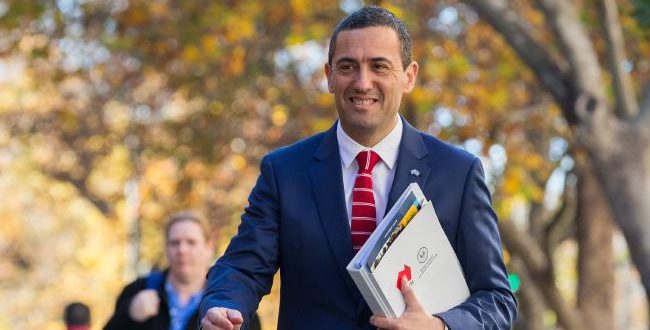Major banks will be hit with a South-Australian based levy to boost the state’s bottom line, as Treasurer Tom Koutsantonis has today delivered a pre-election budget centred on job creation and record infrastructure spending for new hospitals, schools and roads.
The state will raise revenue through a major bank levy forecast to raise $370m over the next four years, and a foreign buyer stamp duty charge of 4 per cent to raise almost $49m.
Mr Koutsantonis justified another levy on the banks, in addition to the commonwealth’s, by arguing financial institutions took “super profits” from communities yet remained undertaxed.
“Banks are continually closing branches, they’re continually charging us to take our own money out of the banks, they’re continually charging us to send out our own statements, this is an organisation that is making super profits and they’re not paying their fair share of tax,” he said.
Less than 10 months out from a state election, unemployment in South Australia is the highest in the nation at 6.9 per cent, with Mr Koutsantonis acknowledging the state was facing “unprecedented headwinds” as it prepared to lose “anchor tenant” Holden on October 20. He anticipated “thousands” would lose their jobs.
“The headwinds are here, the transition is occurring, now is the time for the government to be investing in its community, in its businesses to make sure we can grow those new jobs, those new jobs that are needed as Holden transitions,” Mr Koutsantonis said.
In a budget speech laced with blaming the federal government for failing to support Adelaide’s embattled northern suburbs and preventing Holden from closing, Mr Koutsantonis said he wanted to work with the Turnbull government on future infrastructure projects including the long-awaited electrification of the Gawler train line.
“The decision for Holden to close was made in Canberra, not at Elizabeth, not at Detroit,” Mr Koutsantonis said.
“Former treasurer Joe Hockey was in parliament, daring Holden to leave, daring GM Holden to close its doors and now we are left to pick up the pieces.”
For the third year in a row the government has touted a “jobs budget”.
Reflecting the dire state of employment in South Australia, jobs growth this financial year is estimated at just 0.4 per cent and it is not tipped to rise above 1.25 per cent in any year over the forward estimates.
A jobs package included $80m to attract new businesses, major events and conventions to South Australia and funds to support automotive supply chain companies to diversify.
There will also be a $200m Future Jobs Fund, including a $120m package available to businesses including grants and loans, with owners having to apply before September 30.
The budget delivers a $72m surplus, down from a projected $383m in December, despite its bottom line being boosted by $948m thanks to last year’s sale of the Motor Accident Commission.
The government’s big ticket items include $1.1bn for public hospitals, after health cuts in recent years; and $2.2bn on infrastructure next financial year to fund two new reception to year 12 schools in Adelaide’s north and South, duplicating part of Main South Road and increasing train services.
The hospitals package will include $528m to build a new women’s hospital alongside the new Royal Adelaide Hospital, $24m to upgrade the existing Women’s and Children’s Hospital at North Adelaide, $250m for a new emergency department, operating theatre and day surgery suite at The Queen Elizabeth Hospital, $52.5m for a bigger emergency department at the Lyell McEwin Hospital and $9.2m to extend emergency care at the Modbury Hospital.
The budget reaffirmed a $550m “self-sufficient” energy plan, including $360m on a 250MW gas-fired plant and $150m towards a renewable technology fund, which will be used to build the nation’s largest battery. The plan is aimed at solving the South Australia’s power crisis, which saw the entire state blacked out last September.
The state will spend $117.6m on law and justice issues, including $38.3m to fund extra beds at Mount Gambier’s prison and $31m to increase criminal court rooms and move civil courts to a separate building.
Local communities will benefit from a $40m neighbourhood fund to improve sports fields and playgrounds, and women’s sporting facilities will receive a $20m boost.
Net debt, which sits at $6.29bn in 2017-18, is forecast to grow by $390m over forward estimates, topping out at $6.8bn in 2019-20, then reducing to $6.68bn the following year.
The projected surplus is expected to reach $462m in 2020-21.
Reader comments on this site are moderated before publication to promote lively and civil debate. We encourage your comments but submitting one does not guarantee publication. We publish hundreds of comments daily, and if a comment is rejected it is likely because it does not meet with our comment guidelines, which you can read here. No correspondence will be entered into if a comment is declined.





